What would happen if students examined their school, homes and habits in the same way that doctors examined a patient?
Could they start to identify and change things in their school and home environments that hinder their health and learning?
Could they identify and change their own choices to improve their health and learning?
Could examining their school with health, building and energy professionals help them see potential career paths?
Yes.
We got a glimpse of how this could work last month when sixty students from Baltimore Polytechnic Institute examined the health and learning conditions in their school and its energy use over four class sessions. Students also learned about the 21st century school building project and architecture in another class session.
Benchmarking schools for health and learning conditions and calculating ROI for energy projects.
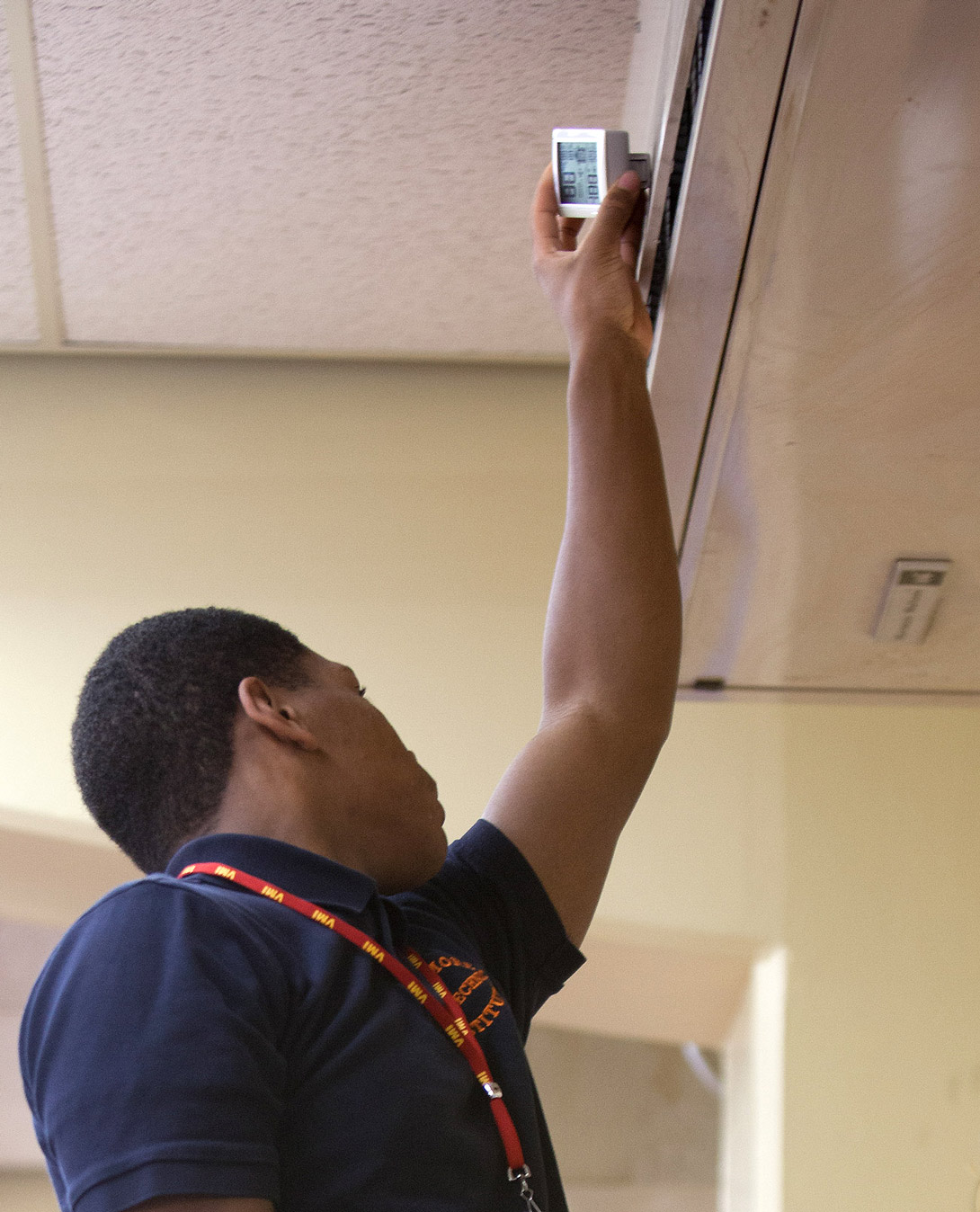

Students learned how to use tools and collect data to benchmark classrooms for lighting, natural light, temperature, humidity and Co2 levels from Keith Madigan, of Madigan and Associates. Madigan helped students understand how to benchmark their school using Operations Report Card by the Collaborative for High Performing Schools and Energy Star Portfolio Manager.
How to Understand and Reduce the Health Effects of Asthma and Lead.
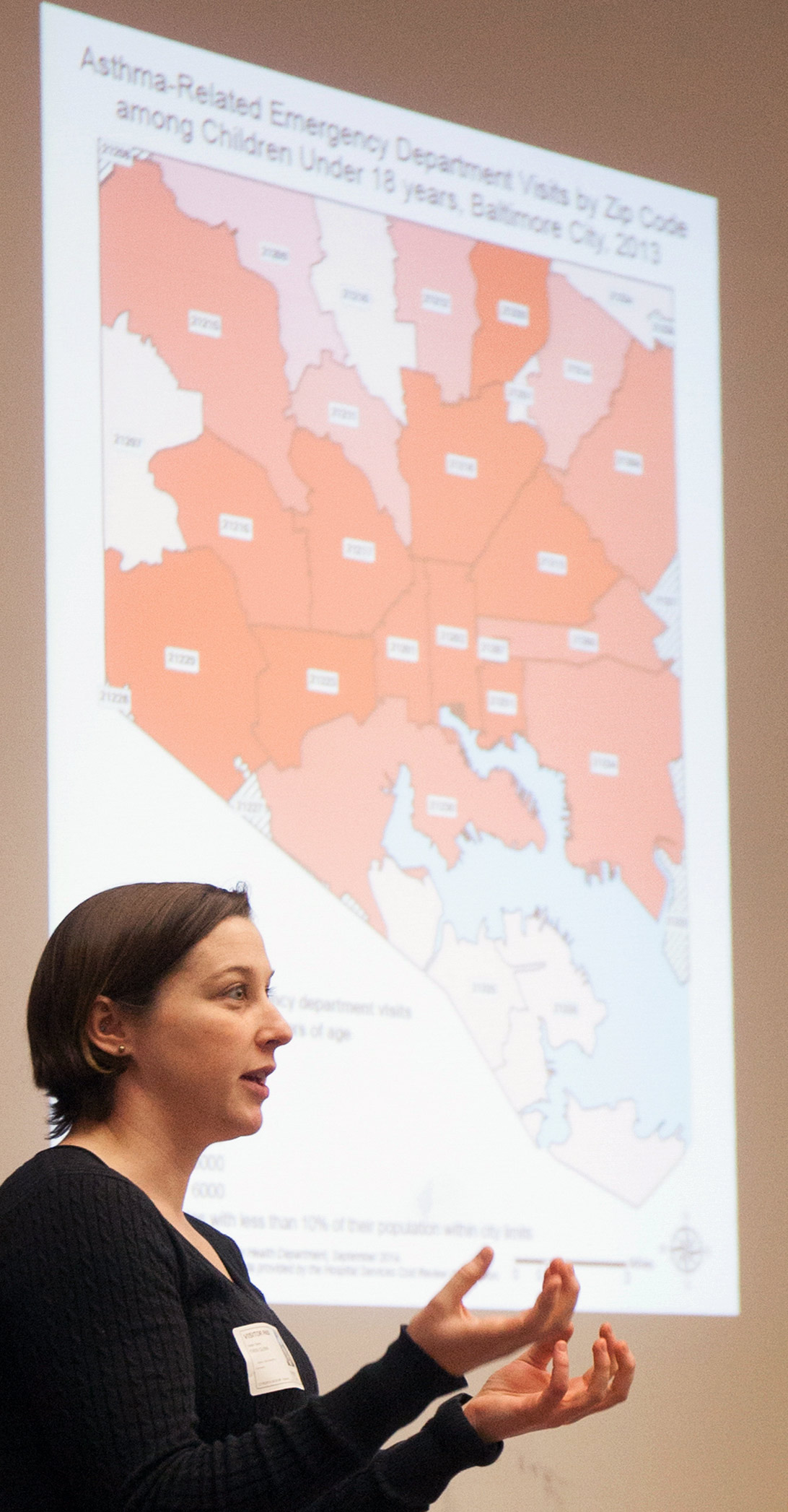
Rebecca Rehr from the Maryland Environmental Health Network talked with students about asthma and asthma triggers. Students learned about programs that provide renovations and trainings to reduce asthma triggers at homes and how green cleaning can reduce asthma attacks. Rehr, a graduate of Poly, talked about how a health presentation at Poly during her junior year sparked her interest in health professions. She told students that when she attended Poly, the water fountains were turned off because of concern about lead in the water, but students weren’t involved in learning around this issue.
After presenting the asthma statistics from the classes, a student noted that he was absent from school the week when the students filled out the forms—due to asthma. It was a good lesson about our need to collect data carefully and fully. The survey results are here Poly charts and data asthma and at the end of this article.
*Survey results from the classes are included at the end of this report. School-wide asthma statistics hadn’t been supplied to Baltimore City Health Department by the health official at the school. Baltimore City Public Schools failed to submit plans for green cleaning as required by Maryland state law.
Learning to Improve the Health and Learning Conditions at Your School (and Home) Environments
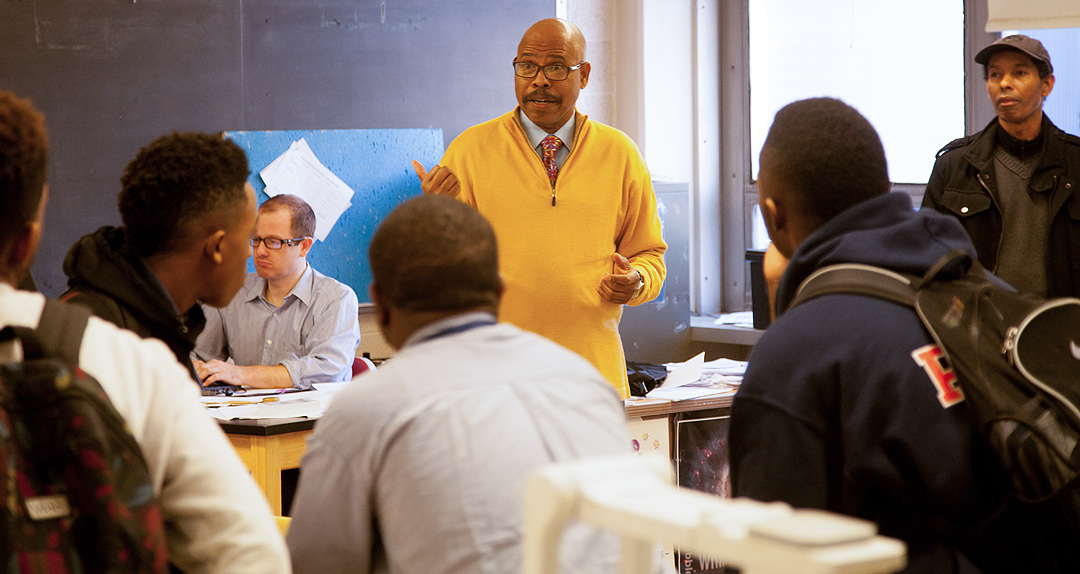
shows students how he investigates and solves health problems in school.
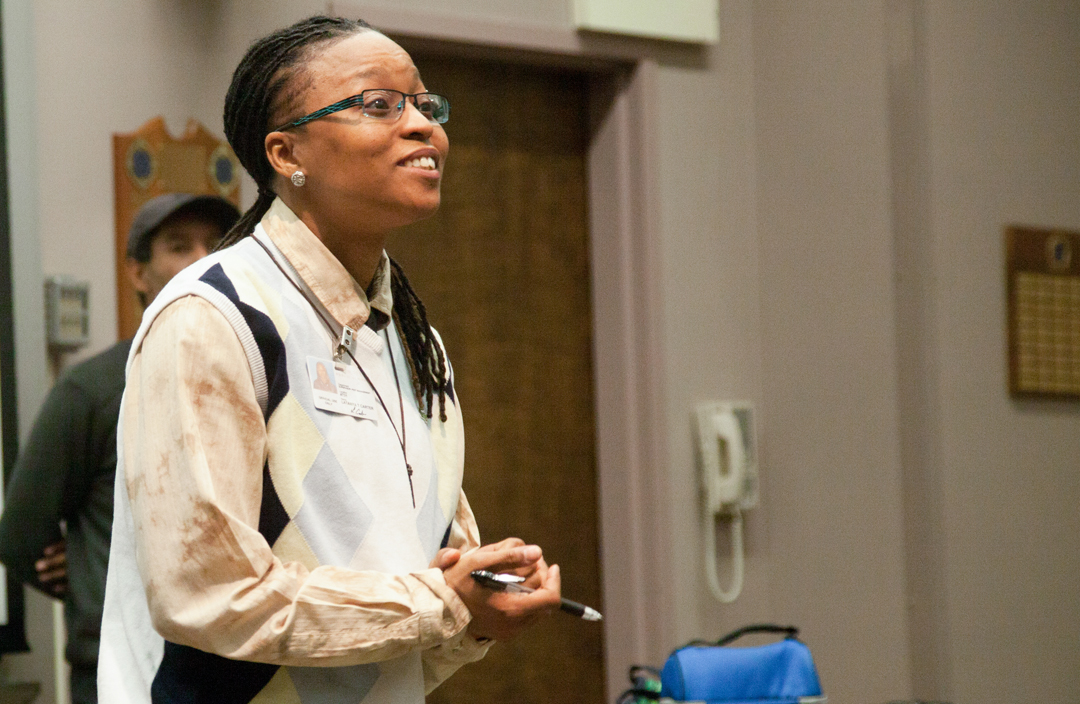
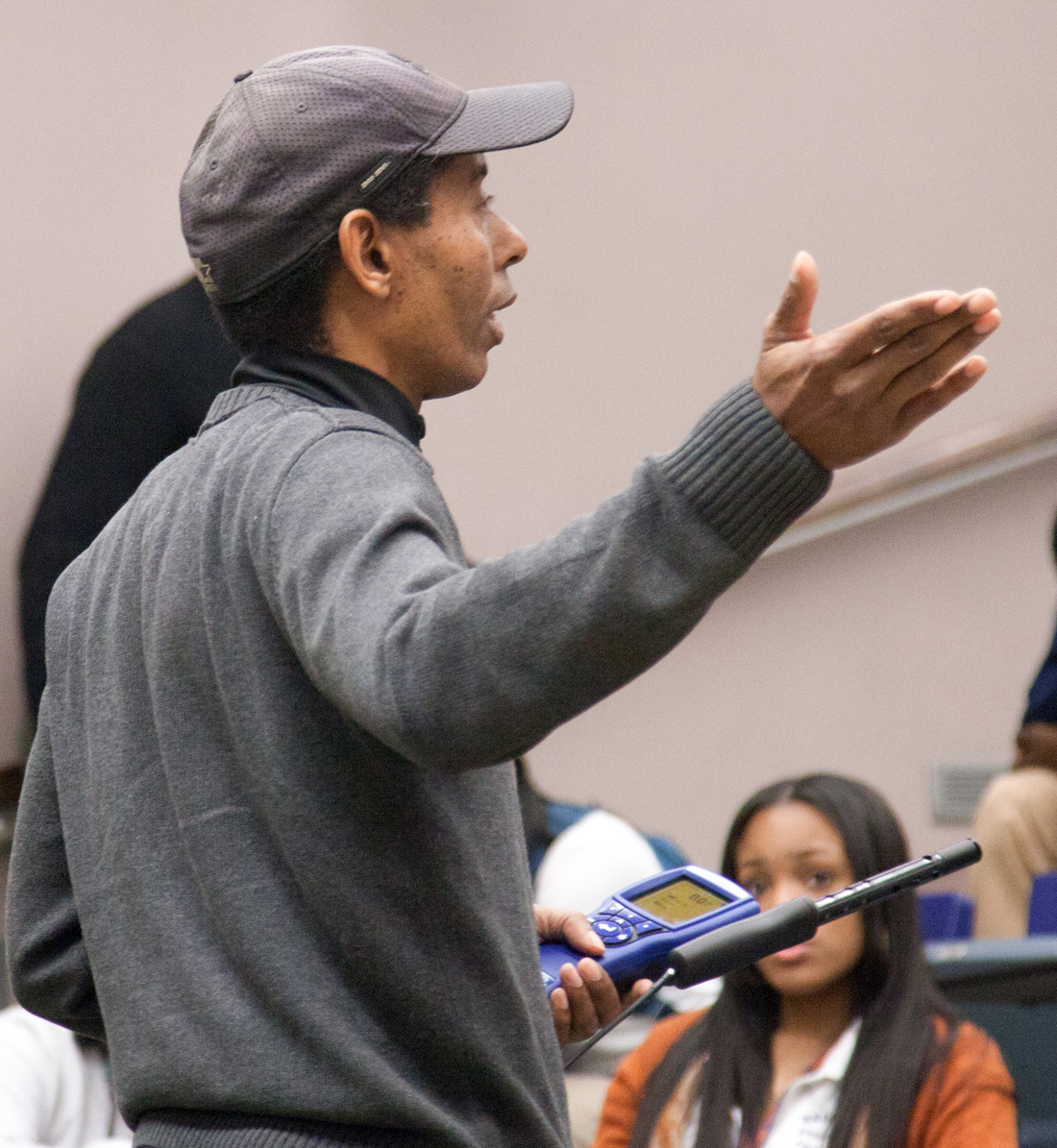

The oils and grease on the mouse stick to the things they rub against and collect dark particles. The conduit provides a handy path to travel. Mice and cockroaches can be asthma triggers. Sealing entryways to the school and keeping food stored properly can reduce pests and improve indoor air quality.
Creating Community Support for Schools, Creating Schools that Support Communities.

21st Century School Building project and how it supports their rights to equal education. Richard Gwynallen of the Reservoir Hill Improvement Council discussed how the council is working to grow community through the 21st Century Building project.
Understanding Architecture Inside and Out: The Systems and Heart of our Built Environments.

Findings and items of interest:
• When we examined the energy and water use data for the Poly/Western campus (the schools share utilities and physical plant) we discovered that water use for Poly/Western in FY 2014 was $517,000 dollars–far higher than other high schools. The next highest water bill was $85,000 dollars. A look at historic data indicated that Poly/Western has had very high water use for several years. Energy and facilities staff has not yet indicated whether this water use has been reduced or whether there is an explanation on why it would be so high in comparison to other schools. Graphs showing the water use comparisons are found
here (Poly Water Use Charts) and at the end of this report.
• We found that the lecture room where we held most of the classes had no air flow through the ventilation/heating vents. When Co2 levels were tested in a nearby classroom, they were high despite the fact that the class had only been filled for a short time.
• Teachers and students didn’t seem to understand how to eliminate asthma triggers or that air vents and air handlers shouldn’t be blocked with classroom materials.
• The energy manager for the district insisted that boilers at the schools could not be switched from oil to gas. A staff member at the school insists that BGE certified that the boilers were dual fuel and able to use natural gas, a far cheaper fuel source at this time.
• There are a number of holes and penetrations in the building envelope ranging from ill fit window air conditioning units to unfitted ducting to doors that fail to close fully.
• Evidence of mold and water leaks in hallways and classrooms and peeling paint on the exterior.
• City Schools have not adopted green cleaning policies, procedures and purchasing despite Maryland state law.
• City Schools continues to have divided systems of reporting for information on asthma and lacks comprehensive reporting of asthma related absences.
• The square footage of Baltimore Polytechnic Institute and Western High School are listed differently from document to document.
Opportunities for learning activities at Poly/Western.
• Calculate the ROI of fuel change from oil to gas.
• Calculate the ROI of lighting change to LED
• Continued monitoring of temperature/humidity/air flow.
• Determine why lecture room has no air flow.
• Investigate why water use at Poly/Western is high.
• Help improve the collection and dissemination of asthma information.
• Offer eye chart exam for students to determine if they need correction to improve their ability to see and learn.
• Investigate the of costs and opportunities to provide internet/computer access to students at their homes.
• Monitor/identify and reduce pests at school with integrated pest management techniques.
• Enter energy use data into Energy Star Portfolio Manager.
• Calculate square footage for Poly and Poly/Western.
• Test for CO and mold.
• Test for lead in paint and in water supply.
• Monitor how chemicals and hazardous materials are used/stored at the school.
Students have an opportunity to use their learning to improve their health, learning and professional preparation.
Their work can provide schools with the knowledge and opportunities to lower their energy and maintenance costs while improving school attendance rates.
This is perfect STEM learning that combines health, learning, architecture, chemistry, biology, economics and social science in a hands on experiment to
create better outcomes for our students and our schools.
This work can help students meet the Core Curriculum and Next Generation Science Standards as they perform tests and create innovative engineering solutions in their immediate environment. School benchmarking can provide school facilities staff with ongoing information on the operations and maintenance of schools so they can better understand and respond to these issues before they become costly.
This learning project offers us a way to refocus and reconnect our schools to the health, learning and success of our students.
Today is the best day to start.
Graphs and data from student survey on asthma
Graphs and data showing water use of Baltimore Polytechnic and Western compared to other City Schools.


Leave a Reply